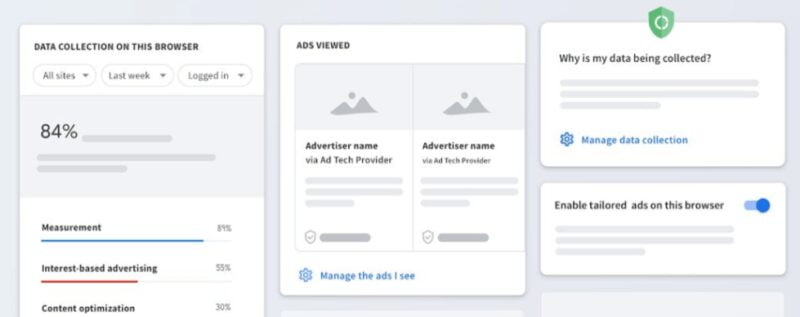Most internet users understand the free content they consume is supported by data-driven advertising. Most people would prefer not to pay for content, but are also increasingly concerned about online privacy.
Google is seeking to navigate a middle path that balances privacy and user control over data and personalized advertising, which the internet has become increasingly dependent on. Building on announcements earlier this year at Google I/O related to Chrome and third-party cookie blocking, the company is initiating a standards discussion with the broader industry about how to support both user privacy and personalized, data-driven advertising.
The core principles. The guiding principles of the initiative are “transparency, choice and control.” Google’s Chetna Bindra, senior product manager, user trust and privacy, believes that this effort will potentially take several years to come to fruition. She also believes that the solution must be holistic and involve broad industry agreement about standards or it won’t work.
This ambitious effort to start an industrywide discussion is partly a reaction to the rise of ad blocking and partly to Apple’s implementation of “Intelligent Tracking Prevention,” designed to prevent third-party ad tracking across the internet on the Safari browser. Apple’s business model doesn’t rely on advertising and the company has sought to make user privacy a differentiated feature of its products.
Chrome is the world’s most used browser but Safari dominates on the iPhone and is not far behind in the U.S. market. But unlike Apple, Google sits at the center of a massive advertising ecosystem.
Blocking cookies isn’t the answer. In one of two blog posts this morning on the new standards initiative, Google cites internal data that argues when cookies go away so does revenue for publishers: “When advertising is made less relevant by removing cookies, funding for publishers falls by 52% on average.” The company says the revenue hit is even larger for news publishers (62%) in the absence of cookies and personalized ads.
Google argues that simply blocking cookies won’t work to deliver true user control because, according to Bindra’s blog post, “broad cookie restrictions have led some industry participants to use workarounds like fingerprinting, an opaque tracking technique that bypasses user choice and doesn’t allow reasonable transparency or control. Adoption of such workarounds represents a step back for user privacy, not a step forward.”
Illustrations of how user controls over data-driven ads might work

Concrete proposals in report. A companion document (.pdf), “Giving users more transparency, choice and control over how their data is used in digital advertising,” presents specifics on how to potentially implement some of these more abstract ideas. The document, created after feedback from stakeholders, says users should be able to see and have control over:
- What data is being collected, by whom and why
- Who is responsible for an ad, and
- What caused an ad to appear
It presents hypothetical screenshots, disclosures and user controls. The document is intended to stimulate discussion among a broad range of industry stakeholders.
The following concepts are what Google ultimately hopes the industry can develop and agree upon:
- A standard way to surface how data is being collected
- A standard way to label ads with metadata
- A standard way to surface the companies involved in showing ads
- A centralized registry of participating companies
- Shared understanding of how to address practices that bypass the standards arrived at through industry discussion
Google says in the proposal that it’s going to “launch an early, experimental, open-source browser extension that will display information for ads shown to a user and will work across different browsers. We plan to start with the ads that Google shows on our own properties and on the properties of our publishing partners.”
Google has also created a feedback form to respond to these ideas.
Why we should care. The reasons are obvious. The digital ads ecosystem has become more reliant on “behavioral advertising” and data-driven personalization over time. But as that system has gotten more sophisticated, users have become more concerned and various initiatives, including privacy laws (e.g., CCPA), have arisen in response. However, Google’s Chetna Bindra says the initiative is not a specific response to such laws.
While this effort is partly self-interested, Google is right in trying to find “a middle way” that empowers users but enables the advertising ecosystem to function effectively.
The industry’s previous “Ad Choices” effort is a dismal failure — because people don’t understand or engage with it. For this initiative to work, several things need to happen:
- The entire ecosystem must participate in the discussion — and agree
- The resulting user experience must be clear and accessible to “ordinary people” and truly deliver on its promise of “transparency, choice and control.”

